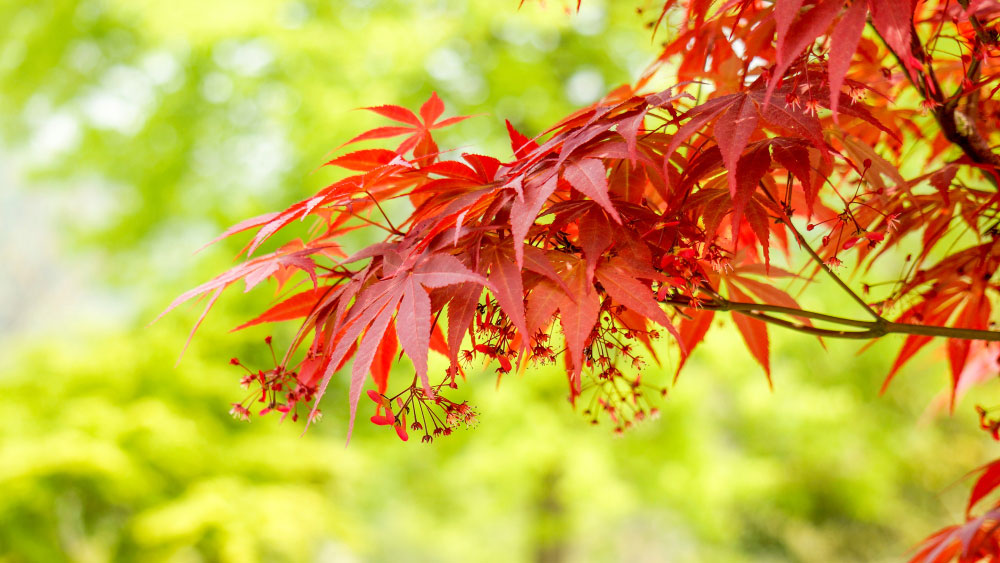6 Japanese Maple Bloom Issues: Why Japanese Maple Not Leafing Out?

The primary appeal of Japanese maples lies in their foliage.
These trees are celebrated for their leaf colors, which range from deep purples to bright reds, and their delicate shapes. The leaves typically emerge after the flowering period and undergo color changes throughout the seasons, providing a dynamic display in the garden.
However, Japanese maple blooms sometimes cease and put gardening enthusiasts like us in a dilemma. We started querying why Japanese maple not leafing out; what halted the foliage?
Well, I have rounded up the six most significant reasons that can stop your Japanese maple blooming. You will also find what to do to mitigate those factors.
Stay with me if you want to know more about returning this magical tree to full bloom.
Why is Japanese Maple Not Leafing Out? (Japanese Maple Bloom Issues)
Japanese Maples, known for their stunning foliage and elegant structure, are a favorite in areas where the temperature is between 32 to 95 ℉ (0 to 35 ℃) (USDA Plant Hardiness Zone 6). So, it’s natural to worry when they show signs of distress.
I will help you to explore the possible reasons behind this and what you can do to help your tree thrive.
Weather Woes
First things first, let’s talk about the weather. Japanese Maples are sensitive to their environment. This could be the culprit if you’ve had a freezing winter or a late frost.
These conditions can damage the buds, delaying or even preventing them from opening. Patience is key here. Give your tree time to recover as the weather warms up.

Watering Wisdom
Watering practices play a crucial role in the health of your Japanese Maple. Both overwatering and underwatering can lead to problems.
Overwatering can cause root rot, a severe issue preventing the tree from absorbing nutrients effectively.
On the flip side, underwatering can stress the tree, especially during dry spells, impacting its ability to leaf out.
Aim for a consistent watering schedule, ensuring the soil is moist but not soggy.
Soil
The ground beneath your tree plays a huge role. Japanese Maples thrive in well-draining, slightly acidic soil.
If the soil is too alkaline (pH >8), it can hinder nutrient uptake. Consider getting a soil test kit to check the pH levels.
A lack of essential nutrients, especially iron, can lead to poor leaf development. A balanced, slow-release 6-3-2 fertilizer can help, but be careful not to overdo it.
Sunlight
Suitable soil and sunlight conditions are essential for Japanese Maples. They prefer well-draining soil and a balance of sunlight and shade.
Too much direct sun can scorch the leaves, while too little can lead to sparse foliage.
If you suspect the soil or light conditions are off, consider relocating your tree or adjusting its environment to better suit its needs.
Pest and Disease Patrol
Keep an eye out for signs of pests or diseases. Aphids, scale insects, and verticillium wilt are common issues hindering leaf development.
Regularly inspect your tree for unusual symptoms and consult a local nursery or arborist for treatment options if you spot anything concerning.
Pruning Practices
Improper pruning can also affect leafing out. It might struggle to produce new leaves if you’ve pruned your Japanese Maple at the wrong time or too aggressively.
So, when to prune Japanese maple?
The best time to prune is late fall or early winter when the tree is dormant. Be gentle, and don’t overdo it.
For fine pruning, waiting until late spring, after the leaves have come out, is recommended. Summer can also be a good time for removing larger branches and dead, damaged, or diseased wood.
When Do Japanese Maples Bloom?
Japanese maples typically bloom in the spring. The small, reddish flowers are borne in stalked, umbrella-shaped clusters, and they bloom between May and June.
Also, Japanese maples should be one of the first plants to budge in the spring. The exact date may vary, but late February to early March in the Mid-South is normal.
Final Words
While Japanese maples are celebrated for their stunning leaf colors and shapes, challenges like weather extremes, watering issues, soil conditions, sunlight exposure, pests, diseases, and pruning practices can hinder their ability to leaf out.
Addressing these six critical factors can help your Japanese Maple thrive and return to its full glory. Remember, patience and attentiveness are vital in nurturing these elegant trees.
To keep your Japanese Maple looking beautiful all year round, monitoring it regularly and giving it the care it needs is essential.
By tailoring the care to its specific needs, you can ensure it remains a stunning feature in your garden that enchants throughout the seasons.
If you’re into gardening, you’ll find the journey with a Japanese Maple tree fulfilling and educational. Witnessing nature’s beauty unfold is a joy for both experienced gardeners and beginners alike.